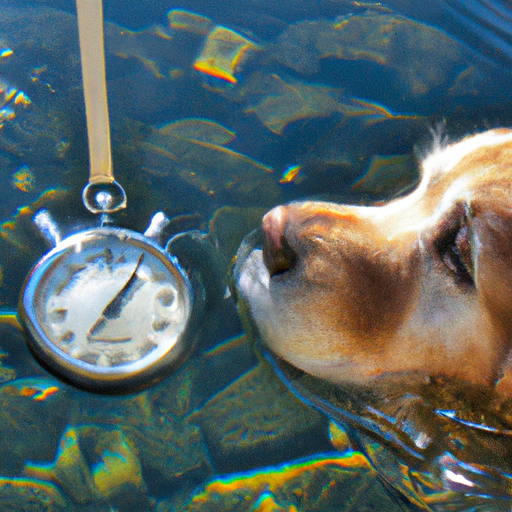As a caregiver, you may often wonder about the physical limits of your furry friend, especially when it comes to aquatic adventures. Let’s dive into the details to uncover just how long dogs can swim.
Understanding Your Dog’s Swim Duration
Contrary to popular belief, not all dogs are natural swimmers. While some breeds excel, others may struggle due to their size, shape, or health. Here’s a general guide:
- Water-Loving Breeds: Labrador Retrievers, Golden Retrievers, Portuguese Water Dogs
- Moderate Swimmers: Boxers, Bulldogs, Pugs
- Breeds That Struggle: Basset Hounds, Dachshunds, Pugs
Factors Influencing Your Dog’s Swim Duration
Various elements can significantly influence your dog’s ability to swim for extended periods. Let’s examine some of them:
- Age: Younger dogs usually have more energy and can swim for longer than older dogs.
- Fitness Level: A dog in good physical shape will outswim a dog that is overweight or generally inactive.
- Health Conditions: Certain health conditions can limit a dog’s ability to swim or even make swimming dangerous.
Training Your Dog to Swim
Before letting your dog venture into the water, it’s crucial to train them properly. Here are some steps to follow:
- Start in Shallow Water: Let your dog get comfortable with the water before moving to deeper areas.
- Use Floatation Devices: A dog life jacket can provide additional safety during training sessions.
- Gradually Increase Duration: Start with short sessions and gradually increase the time as your dog becomes more comfortable.
Recognizing Signs of Fatigue
While it’s fun to play in the water, it’s essential to watch for signs of fatigue in your dog. Here are some signs that your dog may need a break:
- Heavy panting
- Slow or uncoordinated movements
- Whining or signs of distress
Precautions and Safety Measures
Taking some precautions can help ensure your dog’s safety while swimming. Here are some tips:
- Always supervise your dog while they’re swimming.
- Ensure fresh water is available to prevent dehydration.
- Don’t let your dog swim in water with strong currents or riptides.
Frequently Asked Questions
Q1: Can all dogs swim?
Not all dogs are natural swimmers. Some breeds, due to their body shape and size, may struggle more than others.
Q2: Is swimming good exercise for dogs?
Yes, swimming is an excellent low-impact exercise that can benefit dogs of all ages and sizes.
Q3: How can I tell if my dog is getting tired while swimming?
Signs of fatigue include heavy panting, slow or uncoordinated movements, and any signs of distress.
Q4: Can swimming be dangerous for dogs?
Swimming can be dangerous for dogs if they’re not supervised, if they’re in water with strong currents, or if they have certain health conditions.
Q5: How long should I let my dog swim?
The duration depends on your dog’s breed, age, and fitness level. Always supervise them and watch for signs of fatigue.



